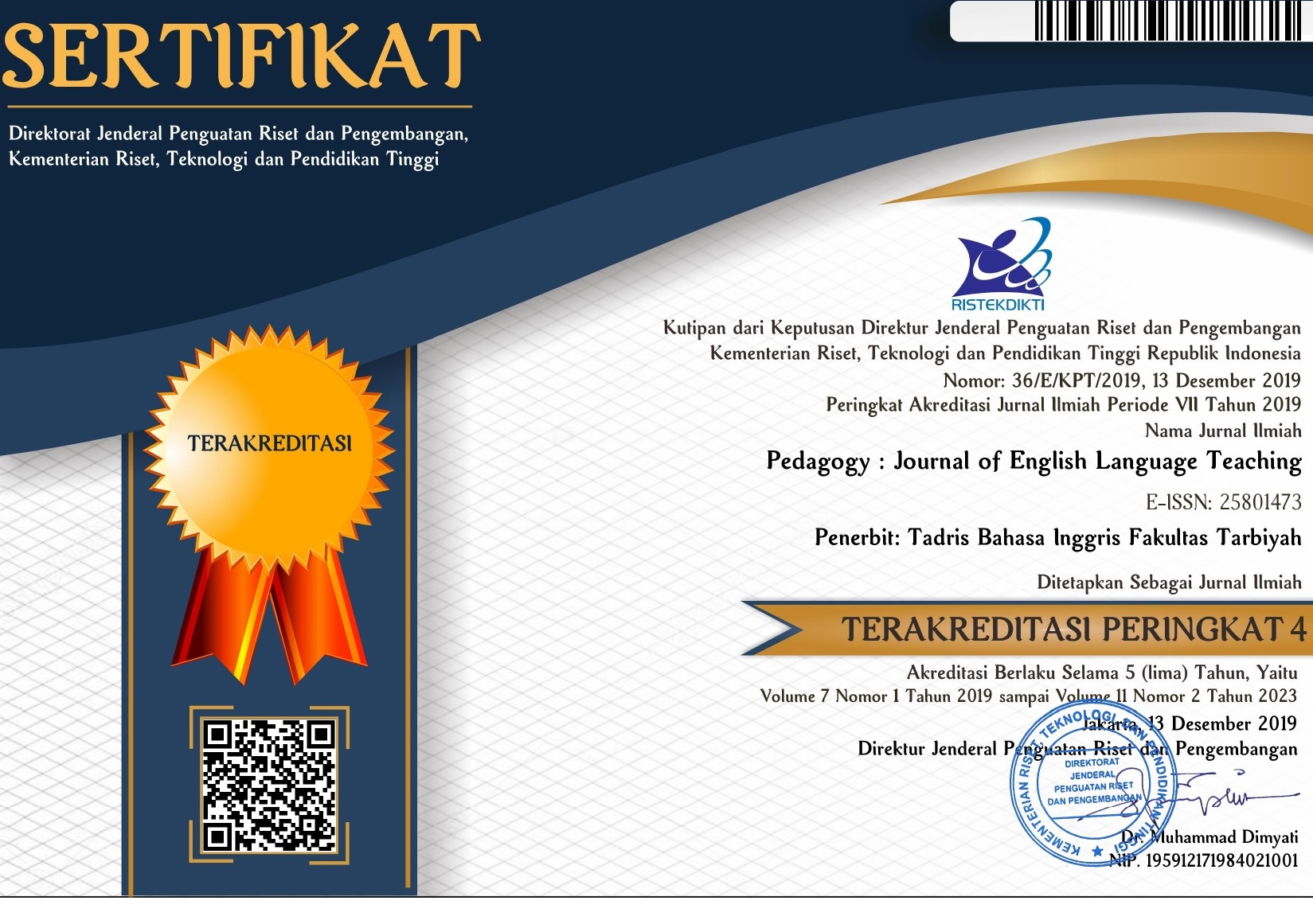A Comparative Analysis of Spoken Error of Students’ Utterances
DOI:
https://doi.org/10.32332/pedagogy.v8i1.1926Keywords:
Speech Production, Speech Error, Morphological Errors, Syntactical ErrorAbstract
This present study deals with the comparative analysis in spoken production errors made by the 2nd and the 4th-semester students of English Education Study Program in STKIP Kumala Metro. The objectives of this research are to comparative the types of errors, the frequency of error, the dominant type of errors, the similarities and differences of errors, and the sources of errors. The type of this research is qualitative research. The data of this research are utterances containing errors taken from the 2nd and the 4th-semester students. In collecting data, the researcher listened to the audio record carefully, writes the scripts correctly, then identifies the data, and selects the data deals with the types of errors. The researcher used Clark and Clark, Dulay, Burt, and Krashen's theory to analyze the errors. The results indicated that there are three types of errors made by the 2nd-semester students, namely, speech errors (78,22%), morphological errors (15,6%), and syntactical errors (6,06%). Whereas, the erroneous made by the 4th-semester students are speech errors (83,86%), morphological errors (13,1%), and syntactical errors (2,93%). The speech errors made by the 2nd and the 4th-semester students have similarities and differences. The similarities of speech errors that found by the researcher were: silent pause, filled pause, repeats, false start (unretracted), false start (retraced), correction, interjection, stutters, a slip of the tongue, error in pronunciation, error in vocabulary, error in word selection, the omission of bound morpheme-s, the omission of to be, the addition of to be, the omission of the verb, the omission of –Ing, the addition of –Ing, and misuse of to be. The differences of errors made by the 2nd and the 4th-semester students are in the addition of preposition, malformation, and disordering. The dominant error made by students is filled pause. These speech errors mostly caused by three sources; cognitive difficulty, situational anxiety, and social reason.References
Downloads
Published
2020-06-10
Issue
Section
Articles
















